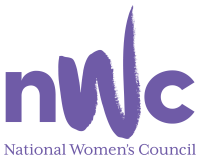Beyond the Veil
Published: Friday, August 06, 2010
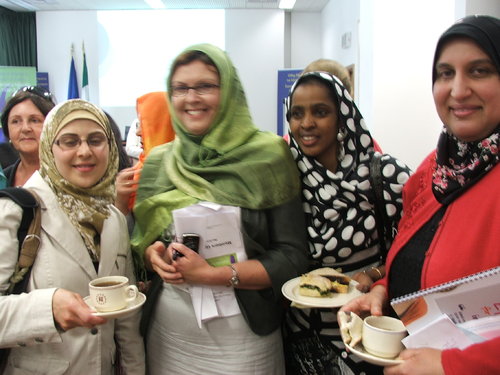 As the debate gathers pace across Europe on the practice of Muslim women wearing headscarves and full-face veils - known as niqab - The Irish Times speaks to five women who wear the niqab in Ireland
As the debate gathers pace across Europe on the practice of Muslim women wearing headscarves and full-face veils - known as niqab - The Irish Times speaks to five women who wear the niqab in Ireland
AISHA CHUCKLES as she tells the story of the child that stopped in the middle of a busy Dublin street and stared in astonishment as she walked past, her features obscured by the full-face veil known as the niqab.
"He turned to his mother and asked: 'Why is that lady dressed up as if it is Halloween?'" she recalls.
Aisha (not her real name) moved to Ireland 13 years ago with her husband, an imam at one of Dublin's smaller mosques. Both adhere to Deobandism, a school of thought which originated in south Asia and hinges on a rigid interpretation of Islam.
Aisha has grown accustomed to the curious glances, the startled double takes and the infrequent scowls her appearance can prompt when she is out shopping or, more recently, taking driving lessons.
"When I came to Ireland first, it was rare to see a woman wearing niqab. Back then some people would shake their heads and say things like: 'May the holy spirit be on you,' but it was never really nasty," she says. "I think people here are more accepting now because there is a greater awareness of Islam. I feel more confident when I walk on the streets."
Originally from Gujarat in India, Aisha was 18 when she started wearing niqab. All the women in her family wore the full-face covering except her mother. "It is a matter of individual choice," Aisha says. "For me, it made sense to wear niqab as I know it is what my Lord ordered for us. I don't feel the need to please anybody else." Aisha's 12-year-old daughter already wears the headscarf, or hijab. "As she gets older, the issue of whether to wear niqab or not is up to her. We won't force her."
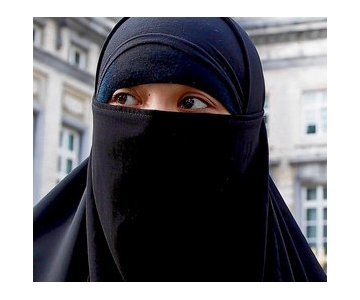 Women who cover completely in public or in front of men to whom they are not related - niqab are usually removed in the company of women - make up a tiny seam of the estimated 50,000 Muslims living in Ireland. Estimates vary but it is thought fewer than 80 women wear niqab here. These include women from Libya, Pakistan, India, Saudi Arabia, Somalia, Algeria, Australia and Chechnya, as well as Muslim converts from Ireland and other European countries including Spain and the UK.
Women who cover completely in public or in front of men to whom they are not related - niqab are usually removed in the company of women - make up a tiny seam of the estimated 50,000 Muslims living in Ireland. Estimates vary but it is thought fewer than 80 women wear niqab here. These include women from Libya, Pakistan, India, Saudi Arabia, Somalia, Algeria, Australia and Chechnya, as well as Muslim converts from Ireland and other European countries including Spain and the UK.
All have watched as the debate over the niqab - often confused with its more conservative cousin, the burqa, a voluminous garment which covers the wearer's eyes with a mesh panel and is seldom seen outside Afghanistan and the border areas of Pakistan - has grown increasingly shrill across Europe and further afield in recent months.
In France, president Nicolas Sarkozy is backing legislation that would ban women from wearing veils that cover the face in public. Similar laws are under consideration in Belgium, Spain, the Netherlands and some Italian municipalities. In several other European countries, particularly the UK, the issue has served as a touchstone for wider debates about Islam, identity and immigration.
Anxieties about the niqab and what it may symbolise are not just confined to Europe. They are also felt in Muslim-majority countries. When I lived in Jordan, the niqab was widely considered a relatively recent Khaleeji - meaning Gulf - import, linked with the austere Salafist strain of Islam.
Some Jordanians associated it with criminals who had reason to hide their identity - including thieves, burglars and prostitutes. At the university I attended in Amman, most of the students who wore niqab belonged to the Islamic studies faculty. Rumour had it wealthy Gulf benefactors were providing scholarships on the condition that female recipients covered their faces.
Last month, Syria outlawed the wearing of full-face veils in schools and universities. The head of Egypt's venerable al-Azhar university, an important institution in Sunni Islam, stirred controversy last November when he declared the niqab was "tradition not religion" and universities had the right to ban female students from wearing it.
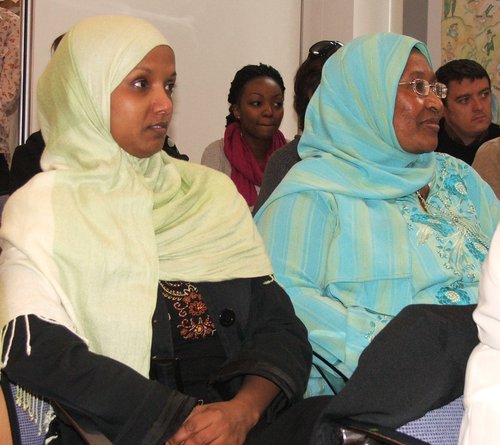 The debate over the niqab and what it represents both to the women who wear it and those, including many Muslims, who abhor its creeping popularity, is a complex one, drawing on differing interpretations of Islamic texts, traditions and identity.
The debate over the niqab and what it represents both to the women who wear it and those, including many Muslims, who abhor its creeping popularity, is a complex one, drawing on differing interpretations of Islamic texts, traditions and identity.
Aisha and five other women who wear the niqab in Ireland were interviewed for this article. Their stories reflect a wide range of deeply personal experiences and explanations for wearing the niqab, and illustrate how reductionist much of the debate surrounding it can be.
"The debate usually consists of Muslim men speaking for us or western feminists who have little or no connection with our experience as Muslim women talking about it from a very abstract point of view," says Jasmina Kid (26), an Australian Muslim who now lives in Ireland.
Writing in the London Independent recently, columnist Joan Smith made the following observation: "It is predominantly Muslim women from poor backgrounds who wear the burqa or the niqab, just as poor Catholic women in Ireland used to dress head-to-toe in black."
My dentist in Jordan, who began wearing niqab in her 50s - it made her feel closer to God, she said - despite the misgivings of her husband and children, might beg to differ.
As might Najat Sanoussi, who moved to Ireland from Libya in 2007. Now 48, Sanoussi began wearing niqab after finishing her engineering studies at university at the age of 23.
Of her six sisters, three of whom are doctors and the others engineers, two wear niqab, three hijab and one does not cover at all.
"In the 1980s I began to have a greater awareness of my religion and my identity as a Muslim, perhaps because of the political situation we faced in our country, the conflict in Palestine, and the war [against the Soviets] in Afghanistan," she says.
"I read some scholars who interpreted the [Koranic verses] to mean women should cover the whole body. I saw that it had a deep historical root in my religion and I understood that this is what our Creator wants us to wear."
It became such an important part of Sanoussi's life that she insisted to her parents she would only marry a man who was comfortable with her covering her face in public.
Wearing the niqab in Ireland has been relatively easy, she says. "There was one incident on the bus recently. A woman started shouting at me: 'Why are you covering your face?' The other passengers were very embarrassed and many came to me to apologise for her behaviour, saying not all Irish people are like that. Another time a man walking past said to me: 'My God, why are you doing that?' I replied: 'You have to be open to other cultures.' He seemed surprised that I answered back," she smiles.
SANOUSSI SAYS THE ISSUE of both niqab and hijab has been clouded with what she claims are "great misconceptions".
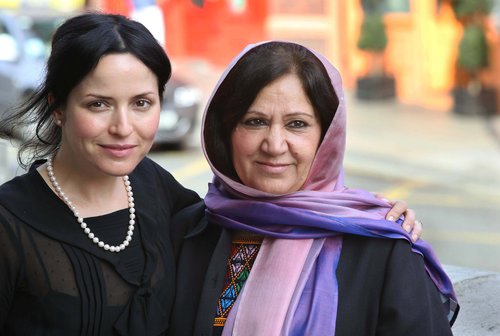 "I have never met a woman wearing either hijab or niqab whom I would describe as being oppressed. Most of them are wearing it by choice," she says. "And with niqab it is not that you have to cover all the time, in all situations. For example, if there is no lady doctor and you have to expose yourself to a male doctor or go before a judge in court, you can show your face. It is flexible."
"I have never met a woman wearing either hijab or niqab whom I would describe as being oppressed. Most of them are wearing it by choice," she says. "And with niqab it is not that you have to cover all the time, in all situations. For example, if there is no lady doctor and you have to expose yourself to a male doctor or go before a judge in court, you can show your face. It is flexible."
Zahra Isieva (25), who came to Ireland as an asylum seeker from Chechnya two years ago, started experimenting with niqab while studying in Syria.
"I wanted to see if I could wear it," she says, as she adjusts the pale pink face veil she wears under a paisley-print headscarf.
"In Chechnya, very few women wear niqab. It is seen as a political symbol there but that's ridiculous. For me it is a sign of obedience to my God and I feel much more tranquil and comfortable when I wear it."
Many of the women who wear niqab in Ireland are not permanent residents but students, like Sara al Oteibi from Saudi Arabia. The 25-year-old, who plans to do post-graduate research on cognitive behavioural therapy, is studying English in Dublin under the King Abdullah Scholarship programme, which allows Saudi students to continue their studies overseas.
Beyond the veil
Al Oteibi began wearing the full-face veil at 15 and knows six other Saudi women studying in Ireland who wear niqab.
"My niqab protects me," she says.
From what?
"From men!" she exclaims.
"The face is the main point of attraction for men. Women who don't wear niqab invite a lot of problems with men. In Islam, women are like diamonds, they need to be protected. Allah knows what is best for women. Also, when I cover my face I don't feel so shy with people. It gives me more confidence." Most of the negative comments al Oteibi and her niqab-wearing friends have experienced in Ireland come from older women.
"One day at Milltown Luas stop an elderly Irish woman said to me: 'You should go back to your own country. You wear ridiculous clothes.' I just ignored her."
In another incident, al Oteibi's sister, who was visiting from Riyadh with their mother, was confronted by some youths who tried to pull her niqab off. "She was very upset and afraid," she says. "My family has travelled to many European countries and they were surprised that it was only in Ireland that something like this happened."
Jasmina Kid moved to Ireland less than a year ago with her husband, an Irish Muslim she met while both were teaching in the United Arab Emirates. Kid, who was born in Melbourne to Tunisian parents, began wearing niqab in the UAE in 2008. "I was working at a British curricular school where most of the teachers were women from the UK and US, and most of them wore niqab," she says. "I got really comfortable with the idea of niqab; most of my friends there wore it. What I saw was contrary to the stereotypes I had always associated it with - these women were all successful, active, professional women who had made an educated choice to wear it."
Kid finds the reasons women have for wearing niqab vary. "Everyone has their own understanding of it. It can be spiritual, physical, a feminist statement or a sense of religious duty. I know some women in England who explain it as some sort of feminist statement, in that they are not going to be told by secular society how they should dress.
"For many, it gives a sense of privacy. I think the secular world has really misunderstood niqab. For a Muslim woman, the niqab is not a tool to lock herself out of the world and cut people off. Rather it empowers her to invite whom she wishes into her world."
And the niqab is not a barrier to communication, Kid says. "Some people say if you are wearing it you can't communicate, you can't participate in society. But you still have the person's tone of voice and the substance of what they are saying."
She doesn't wear the niqab every day in Ireland. "I've been here for less than a year and I'm getting used to everything around me. I wear it where I'm comfortable, like going to the mosque or to the shops. For me it's not a state of being: I'm not a sinner if I take it off. It's an ongoing journey for me," she says.
"When I do wear it here, I haven't experienced any open prejudice. Once I was walking past a group of youths, and one of them made a comment about my niqab, he was just having a bit of fun, but his friend slapped him on the shoulder and said: 'Hey, that's a bit racist.' Irish people seem very tolerant."
An Irish convert: 'Everywhere you look these days it's all sex, sex, sex, sex'
Amna Han, originally from Tallaght, converted to Islam in 2004.
"I became more interested in Islam after 9/11 because of all the media coverage of Islam and Muslims.
"I started wearing hijab after I converted in 2004 at the age of 18. Niqab felt like a natural progression. I've been wearing it on and off for just under a year. My sister, who converted last year, also wears niqab.
"It's not for every woman but it makes me feel so much more secure. I think the reasoning behind it is just common sense. It is a form of protection. Everywhere you look these days it's all about sex, sex, sex, sex. Men are weaker . . . they react to images more than we do. They just can't control themselves.
"It also gives me a sense of freedom. When I wear niqab I am judged only for who I am and not for my body - that is something I have wanted all my life.
"During my teenage years, it was horrible - the pressure of always having to dress up for men. Now I feel like I'm finally being treated as a human being.
"The message it sends out to men is: don't come near me because you're not going to get anything from me. I'm the feminist: women have been fighting for years to be judged on who they are, and not their boobs or bum.
"Wearing niqab in Ireland can be difficult because some people look down on you. They forget that behind the veil is a woman. They shout things like go back to your own country. This is my country, where am I supposed to go back to? Tallaght?
"My husband, a Pakistani man I met after I converted, doesn't want me to wear niqab because he is concerned that I will get loads of abuse and he hates seeing me upset. I'm doing this for the sake of Allah - not for my husband or anyone else.
"I don't wear niqab in front of my parents because they don't like it. They think you should dress according to what is the norm in society and keep religion as a private affair.
"Before I had children, I worked as a care assistant while studying to be a nurse. I believe I could do that job wearing niqab because at the end of the day, it's just a face covering.
"If I was told I couldn't wear niqab while working in a mixed environment, then I wouldn't work. Simple as that."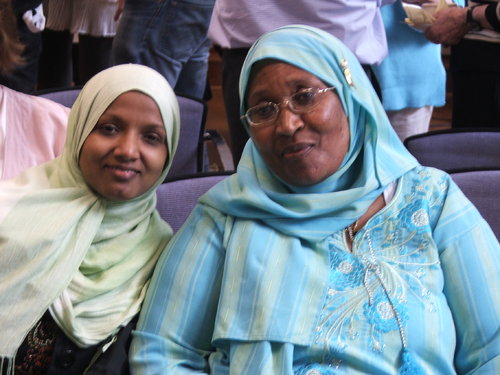
MUSLIM DRESS EXPLAINED
Hijab - This word is used to generally describe a Muslim woman's modest dress. More specifically, it refers to a piece of fabric fastened under the chin as a headscarf, leaving the face uncovered.
Niqab - A face veil which may or may not leave the eyes uncovered. Usually worn in black, it is often worn with the abaya (see below).
Chador - Worn in Iran, the chador is a black cloak worn from the top of the head. The face is usually left uncovered.
Burqa - A voluminous garment that conceals the entire body including the eyes, which are covered with a mesh panel. The burqa is worn mostly in Afghanistan and border areas of Pakistan.
Khimar - A style of headscarf that drapes the entire top half of the body.
Abaya - Common in the Gulf, the abaya is a full-length cloak, usually black, worn over other clothing when in public.
